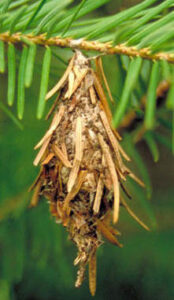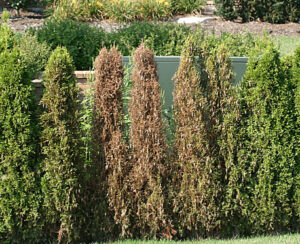Spray for Bagworms in May and June
go.ncsu.edu/readext?794749
en Español / em Português
El inglés es el idioma de control de esta página. En la medida en que haya algún conflicto entre la traducción al inglés y la traducción, el inglés prevalece.
Al hacer clic en el enlace de traducción se activa un servicio de traducción gratuito para convertir la página al español. Al igual que con cualquier traducción por Internet, la conversión no es sensible al contexto y puede que no traduzca el texto en su significado original. NC State Extension no garantiza la exactitud del texto traducido. Por favor, tenga en cuenta que algunas aplicaciones y/o servicios pueden no funcionar como se espera cuando se traducen.
Português
Inglês é o idioma de controle desta página. Na medida que haja algum conflito entre o texto original em Inglês e a tradução, o Inglês prevalece.
Ao clicar no link de tradução, um serviço gratuito de tradução será ativado para converter a página para o Português. Como em qualquer tradução pela internet, a conversão não é sensivel ao contexto e pode não ocorrer a tradução para o significado orginal. O serviço de Extensão da Carolina do Norte (NC State Extension) não garante a exatidão do texto traduzido. Por favor, observe que algumas funções ou serviços podem não funcionar como esperado após a tradução.
English
English is the controlling language of this page. To the extent there is any conflict between the English text and the translation, English controls.
Clicking on the translation link activates a free translation service to convert the page to Spanish. As with any Internet translation, the conversion is not context-sensitive and may not translate the text to its original meaning. NC State Extension does not guarantee the accuracy of the translated text. Please note that some applications and/or services may not function as expected when translated.
Collapse ▲Bagworms hatch in early May and once this happens trees and shrubs can suffer as these small, voracious worms eat foliage and needles while they build a bag around themselves during the process. They aren’t easy to see and most folks don’t even realize they have a problem until it’s too late. Foliage becomes sparse and shrubs are stripped of their needles. Many small pinecones suddenly appear, hanging on plants that don’t even have pinecones! But it isn’t a pinecone, it’s a bagworm that has spent the summer building a protective bag around itself that pesticides can’t penetrate.

At this point it’s too late to spray but if you apply insecticides early enough they are easily killed. Applications made in May and June can control this pest and if you had them last year, you can probably expect them again this year. So get out there and look for the small gray to black worms as they crawl along the branches of your ornamental plants before they build their protective bag. They seem to prefer arborvitaes, Leyland cypress and junipers but can be found on almost every landscape plant in your yard including Japanese maples and blueberries!





